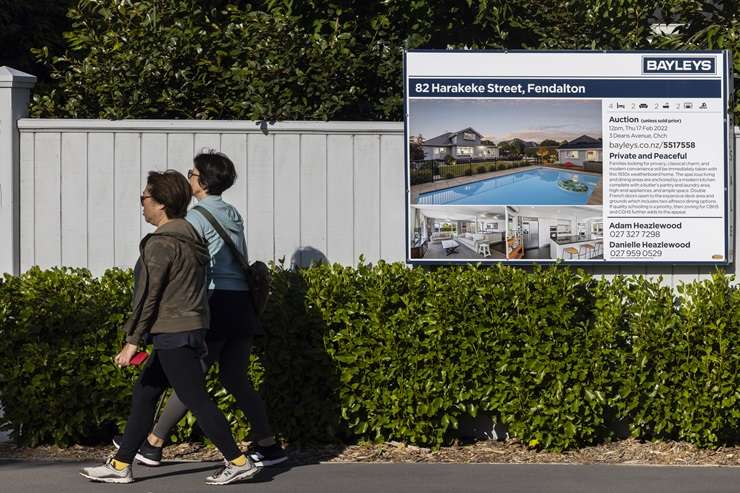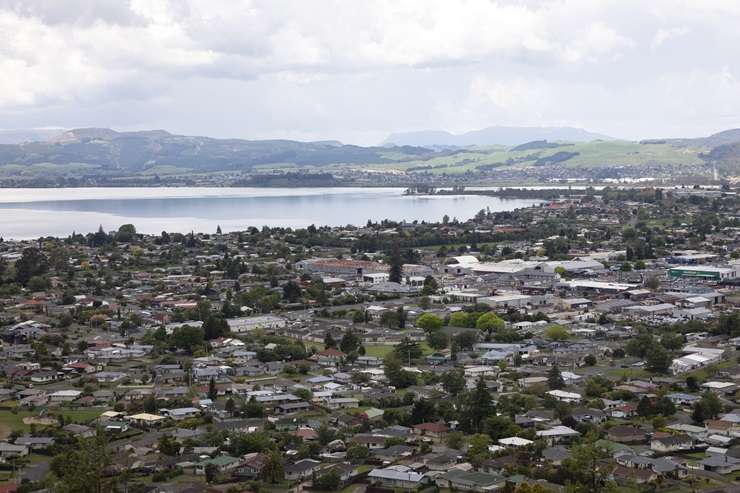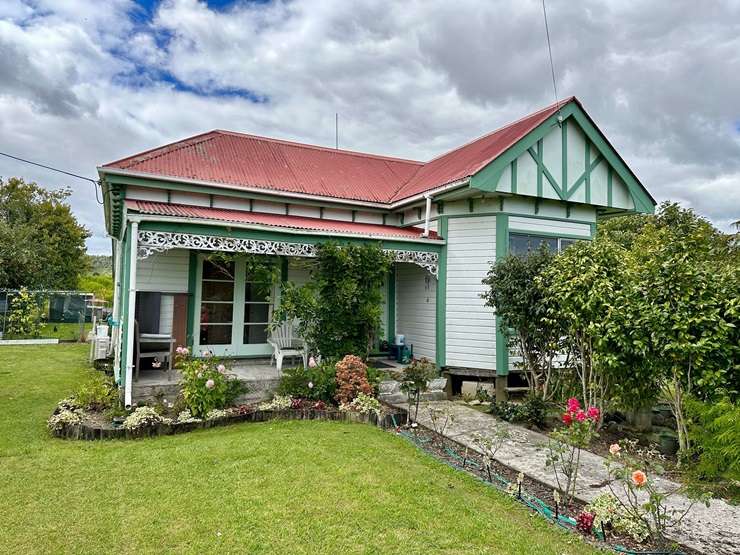Property values in almost every New Zealand suburb are substantially higher now than they were four years ago – despite the post-Covid period being one of the most volatile and unsettling for buyers and sellers.
New research by OneRoof shows that the majority of homeowners have come out on top even after the biggest housing market slump in more than decade.
Much of the value gains made during the post-pandemic boom have endured – aided by the steady upturn in the market since the slump came to an end in June last year.
In fact, the research shows that value growth in the four years since May 2020 outpaced value growth in the preceding four-year period in 323 suburbs, meaning those lucky enough to have ridden the boom have for the most part seen the value of their biggest asset grow in size.
Start your property search
OneRoof wanted to examine the impact of what was a once-in-a-generation market event on property values. The spike in property values post-Covid, fuelled by ultra-low interest rates and a border shutdown, has left a swathe of homeowners much wealthier on paper than they could ever have hoped to be.
The OneRoof deep dive was inspired by similar research carried out by realestate.com.au in Australia and spurred by a recent spike in the number of homes for sale, which has fuelled talk of price declines.
The research excluded suburbs with less than 20 settled sales in the last 12 months.
An extraordinary ride
Four years ago, the housing market was preparing for the worst, with the nationwide average property value dropping 1% month-on-month as the country dealt with the arrival of Covid-19.
But the Reserve Bank’s emergency reduction in the Official Cash Rate, to 0.25%, and New Zealand’s quick exit from a nationwide lockdown triggered a extraordinary run of house price growth. The nationwide average property value jumped nearly 44% in less than two years.
Discover more:
- House price report: Has your house earned $160,000 in the last three months?
‘Insane’: 175 bids in 13 mins push price of South Auckland bungalow over $1.25m
- Farro Fresh founders sell their luxury Auckland home for over $8m
However, inflation fears spurred an equally unprecedented run of interest rate hikes, with the OCR rising from 0.25% to 5.5% in the space of 20 months. This resulted in a country-wide market slump, which saw property values fall on average 14%, although values in some cities tumbled by more than 20%.
The halt in rate hikes last year set conditions for a market recovery, and property values have grown on average more than 3% since the end of the slump.
Reversals of fortune
Property values nationwide at the end of April 2024 were 29% higher than they were in May 2020, with the research identifying 57 suburbs where values were up by more 50%.
Just three suburbs are in a worse position now than they were at the start of the pandemic’s boom and bust cycle. They are Totara Park, in South Auckland (-7.1%); Newmarket, also in Auckland (-3.4%); and Wellington Central, in Wellington (-0.3%). The research identified another three suburbs – Auckland Central, Grafton and Koutu – where growth was neutral.
Some of the biggest post-pandemic lifts were in suburbs whose property fortunes were languishing in the four years leading up to Covid.
Suburbs in Christchurch and West Coast saw the biggest house price surges, with values almost doubling in some locations.
The biggest turnaround was in Greymouth, West Coast. The suburb’s average property value barely grew in the four years to the end of April 2020, rising just 8.5% from $247,000 to $268,000. In the last four years, though, property values in the suburb have jumped 75% to $471,000, a growth difference of 67.2%.
Also enjoying a huge turnaround in their fortunes are Cobden, in West Coast, and Southshore, in Christchurch, where the growth difference between post- and pre-pandemic periods was just over 63%.
Property values in every West Coast and Christchurch suburb covered in the research have grown at a faster pace in the last four years than they did in the preceding four years.
Those 81 suburbs did well out of the post-pandemic boom but, unlike other parts of the country, also managed to weather the slump, proving affordable and attractive to buyers even in a high interest rate environment.
Undervalued pre-Covid
Both Christchurch and West Coast had also underperformed in the four years leading up to Covid. In Christchurch, the market was still dealing with the fallout from the 2011 earthquake while West Coast was viewed less favourably than other affordable locations, such as Dunedin and Rotorua.
The research also identified strong post-pandemic lifts in several Queenstown-Lakes suburbs. Property value growth in Arrowtown in the last four years was 45% higher than in the preceding four years. In Kelvin Heights the growth rate was 27% higher and in Lake Hayes it was 23% higher. Much of the growth in these wealthy locations can be attributed to the opening of international borders and the resurgence in Queenstown’s tourism market.

A For Sale sign in the Christchurch suburb of Fendalton in 2022, just as prices in the city were peaking. Photo / Peter Meecham
Of the 278 Auckland suburbs covered in the research, about half enjoyed more growth post-Covid than in the preceding four years. This wasn’t surprising given the market in Auckland peaked in 2016 and fell into a slump in 2018 and 2019.
The biggest reversal of fortunes was in the city’s more affordable suburbs, in the southern and northern fringes.
Derailed by the slump
However, the research found the housing market slump had derailed the trajectory of property values in more than half the country. The growth rate in 484 suburbs was lower in the last four years than it was in the previous four-year period.
The reversal in fortunes was most severe in Koutu, Rotorua, where the current average property value of $503,000 is only 0.6% above where it was when the country came out of lockdown in 2020. That is significantly below the 136% growth rate the suburb enjoyed in the previous four years.
Rotorua as a whole found itself out of favour post-Covid, with the city’s growth rate in the last four years at 13% – miserable compared to the 84% growth rate enjoyed in the four years leading up to the pandemic.
Also suffering lower growth rates were suburbs in Dunedin and Whanganui. Some of the malaise in these locations was driven by the low interest rates that fuelled the post-Covid boom. Buyers, especially investors, found they could buy in pricier major metros, such as Auckland, Tauranga and Hamilton, because credit was cheap.

Houses in Rotorua. The city's growth trajectory was derailed post-Covid. Photo / NZME
The slump, however, was to blame for the reversal in Greater Wellington’s fortunes. Value growth in the region’s suburbs was in last four years 43% lower than it was in the preceding four years. House prices in the region surged post-Covid, with some suburbs enjoying some the country’s strongest lifts, but the tumble during the slump was just as hard, pulling down overall growth rate for the last four years to just 16%.
What the industry is seeing
Bayleys Canterbury general manager Rachel Dovey said the big lifts in Christchurch’s house prices post-Covid were the result of several unique factors in the city’s housing market.
First off, the price lifts were off a low base, with Christchurch still relatively affordable compared to Auckland or Wellington. Also helping the market was the large number of new or renovated homes in the city, which were attractive to new buyers.
“Every day of the week I meet someone who has moved here or are in the process of moving. There’s still quite a trickle down here and the people who come particularly to Christchurch are delighted with what’s happening in the city – how pretty it is, the stadium is going to be a massive drawcard – it’s looking just outstanding and in a city location and just the diversity of jobs, I think,” she said.
“People have moved down here for work, an affordable lifestyle and less travel – all of that and I think that has really driven the demand for good residential property.”

Affordable: This three-bedroom villa in Karamea is priced at $425,000. Photo / Supplied
Affordability post-Covid had also helped lift activity in West Coast, but so did the ability for homeowners to work remotely.
Property Brokers agent Paul Murray, who is based in Karamea, West Coast, said: “Covid turned out to be a bit of a boon for us. The big change was employers, actually. Employers used to think shirking from home rather than working from home and then with Covid and the lockdowns when everybody had to work from home, they found that wasn’t accurate at all and people were quite able, quite comfortable working from home and quite efficient.”
Murray said West Coast suddenly became “popular” with out-of-towners with internet-based jobs, especially because the properties were some of the cheapest in the country.
“It didn’t take too much of a push for someone in the more expensive parts of the country like Taupo, Tauranga, Auckland or Wellington to think, ‘if I sell my crappy million-dollar house in Auckland I could buy a house on the West Coast for a third of the price and still carry on regardless’.”
He said it was a great place to live as it had a slower pace of life and near the beach. However, he added that the key to living in West Coast was being able to support yourself by working from home because there weren’t a huge amount of jobs around.
Murray said there were lots of affordable options in the region, including a two-bedroom, one-bathroom renovated farmhouse that had recently dropped its asking price from $650,000 to $590,000 and a three-bedroom one-bathroom villa priced at $425,000. Both were on 1000sqm-plus sections.
A three-bedroom home on a larger 4320sqm section at 3934 State Highway 67, in Little Whanganui, which had no immediate neighbours and was a “stone’s throw from the Tasman Sea”, was priced at $550,000.
- Click here to find properties for sale
















































































